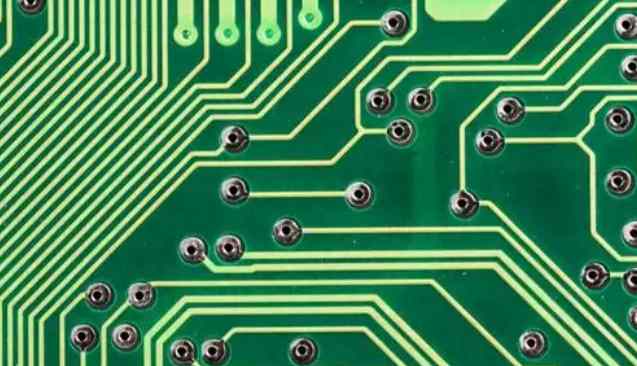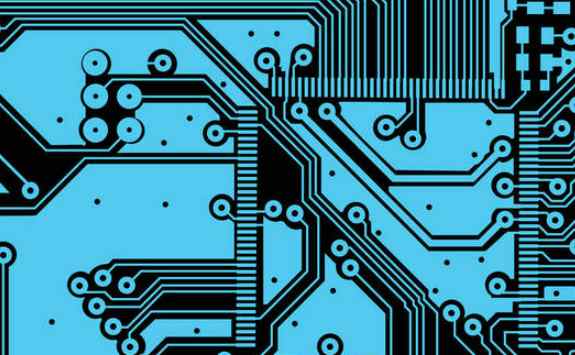
Dk is one of the many parameters to be considered when designing circuit board materials suitable for millimeter-wave circuits, such as 77GHz automotive collision avoidance radar, and the variation of Dk should be controlled as close to its nominal value as possible. Other material parameters that can affect the performance of millimeter-wave circuits include Df, material thickness, copper conductor quality, hygroscopicity, and the "glass braiding" effect caused by glass fiber reinforcement. Again, consistency is essential, especially at millimeter-wave frequencies, where dramatic changes in these parameters can also affect circuit performance.
These different circuit parameters affect the "design Dk" value of the circuit board material. To ensure a clear and unambiguous description of Dk, the term "effective Dk" here refers to the total Dk value generated by the signal during its propagation. For microstrip lines, "effective Dk" refers to the combined value of Dk in the medium and Dk in the air around the medium. The "design Dk" is based on the "effective Dk" only considering the Dk value of the material itself, that is, after eliminating the influence of the surrounding air on the Dk.
Microstrip wires fabricated from Rogers RO3003™ circuit board material with a thickness of 5mil and electrolytic (ED) copper surface were tested at 77GHz with an effective Dk (including air effect) value of 2.54 and a Design Dk value of 3.16. By comparing several different Dk values, it can be seen that the Dk value of the raw material in the direction of thickness or z-axis is 3.00. This value is obtained by using the standardized test directly on the raw material without the influence of circuit factors. The "raw material Dk" represents the properties of the material and is the inherent Dk of the medium material. However, the "effective Dk" and "Design Dk" are DKS used to characterize the properties of a circuit.

For example, the "design Dk" of a material (the Dk of a material tested in circuit form) varies with the thickness of the material. While the "design Dk" varies with the thickness of the material, it is usually also affected by the operating frequency, and the Dk decreases with increasing frequency. Therefore, for circuit design engineers, these changes in Dk will introduce certain impedance errors when designing millimeter-wave transmission lines using computer simulation software.
If the microstrip circuit uses a relatively thin line laminate, then the distance between the signal conductor surface on the top layer and the ground surface on the bottom layer is bound to be small. The thinner the line laminate is relative to the Dk of the dielectric material, the more susceptible the circuit produced from it is to the conductor layer, in which case the "effective Dk" and "design Dk" values are more affected by the conductor layer. As the "design Dk" value of the transmission line on the thin substrate increases, its capacitance increases and its impedance decreases. Conversely, when the "design Dk" value of a transmission line on a thicker substrate decreases, the capacitance decreases and the impedance increases. In addition, the use of a wider transmission line can also indirectly achieve the purpose of increasing capacitance, but this will increase the area of conductors on the PCB.
For many high-frequency applications, including 77GHz radars, the impedance of the transmission line needs to be consistent at all locations in order to minimize signal reflection. If the transmission line deviates from the 50Ω characteristic impedance, the signal will reflect, lose, and phase shift. For a given Dk range, these offsets have a much greater effect on the phase at millimeter-wave frequencies than at low-frequency frequencies, and can be the main cause of radar performance degradation at millimeter-wave frequencies.
Millimeter wave circuits typically use thin PCB materials, and in most cases are multilayer circuits containing analog, digital, and power supplies. For the same type of material, the values of "effective Dk" and "design Dk" will decrease as the thickness increases. Using Rogers' RO4350B™ circuit board material as an example, the average Dk in the material thickness direction or the Z-axis direction is 3.96 at a thickness of 6.6mil at a frequency of 8-40GHz; However, at 30mil thickness, the "design Dk" value drops to 3.68 (as shown in Figure 1). As you can see, the "design Dk" decreases as the thickness increases; When the material thickness reaches 60mil, the "Design Dk" value decreases to 3.66. Of course, the "design Dk" will not decrease indefinitely because the thickness continues to increase. When the thickness increases to a certain extent, the Dk value will tend to be stable. At this time, the "effective Dk" and "design Dk" are mainly determined by the medium materials in the circuit board.









